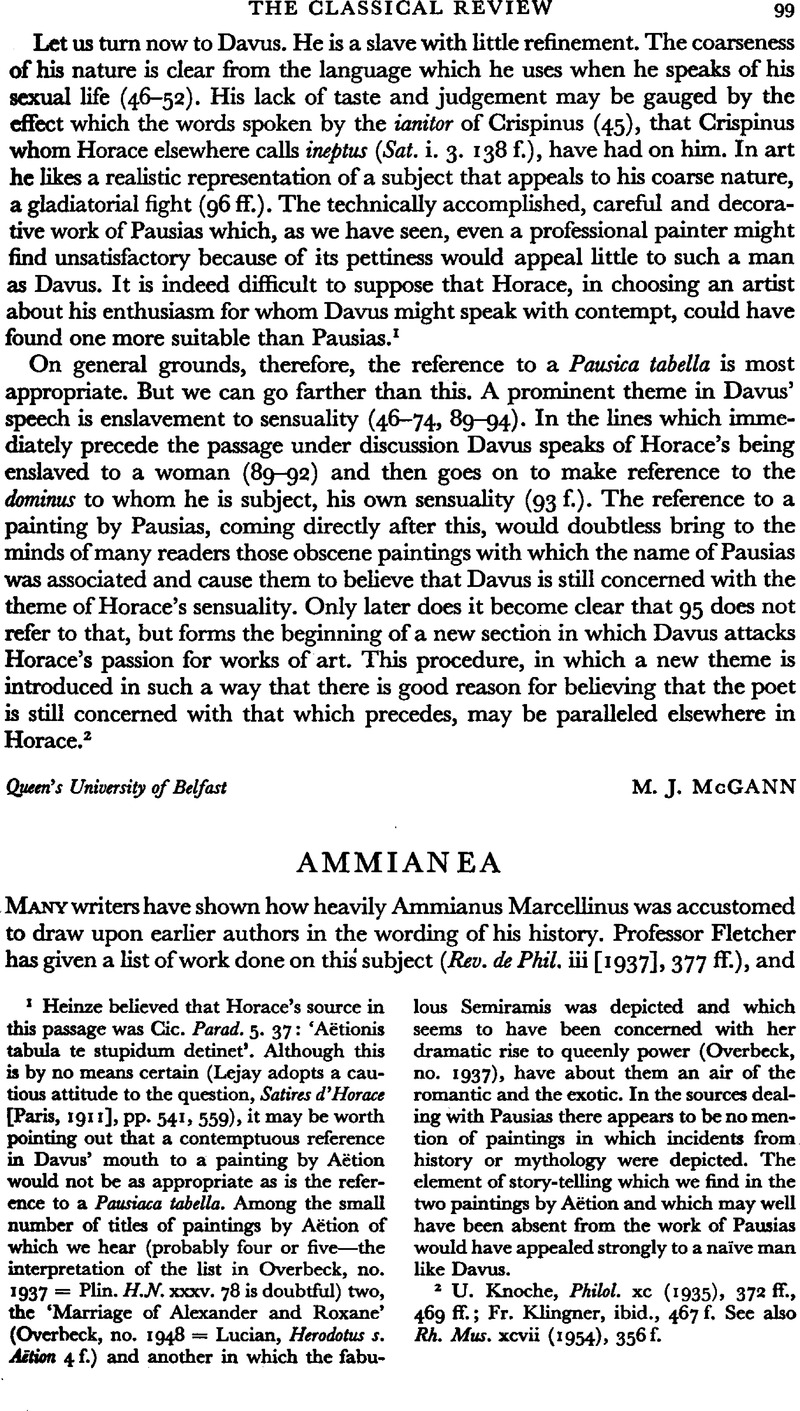No CrossRef data available.
Article contents
Ammianea
Published online by Cambridge University Press: 13 February 2009
Abstract

Information
- Type
- Review Article
- Information
- Copyright
- Copyright © The Classical Association 1956
References
page 99 note 1 Heinze believed that Horace's source in this passage was Cic. Parad. 5. 37: ‘Aëtionis tabula te stupidum detinet’. Although this is by no means certain (Lejay adopts a cautious attitude to die question, Satires d'Horace [Paris, 1911], pp. 541, 559), it may be worth pointing out that a contemptuous reference in Davus' mouth to a painting by Aetion would not be as appropriate as is the reference to a Pausiaca tabella. Among the small number of titles of paintings by Aëtion of which we hear (probably four or five—die interpretation of the list in Overbeck, no. 1937 = Plin. H.N. xxxv. 78 is doubtful) two, the ‘Marriage of Alexander and Roxane’ (Overbeck, no. 1948 = Lucian, Herodotus s. Aëtion 4 f.) and another in which die fabulous Semiramis was depicted and which seems to have been concerned with her dramatic rise to queenly power (Overbeck, no. 1937), have about them an air of the romantic and the exotic. In die sources dealing with Pausias there appears to be no mention of paintings in which incidents from history or mythology were depicted. The element of story-telling which we find in the two paintings by Aëtion and which may well have been absent from die work of Pausias would have appealed strongly to a naīve man like Davus.
page 99 note 2 U. Knoche, Philol. xc (1935), 372 ff., 469 ff.; Fr. Klingner, ibid., 467 f. See also Rh. Mus. xcvii (1954), 356 f.
page 100 note 1 I gratefully acknowledge financial assistance from the Central Research Fund of the University of London in the preparation of these notes.
page 100 note 2 On the possible independent value of G see Clark, Text Tradition of A.M., New Haven, 1904; R. P. Robinson, The Hersfeldansis and the Fuldensis of A.M., Univ. of Missouri Studies, vol. xi, no. 3 (1936), pp. 118 and 140; G. B. Pighi, A.M. Capita Selecta, Neuchâtel (1948), Introd. pp. xvii and xix.
page 101 note 1 This and other conjectures are contained in an index to Amm. compiled, I understand, by Petschenig, but never published. Clark refers to such conjectures as ‘in indice’. I am indebted to Professor Fletcher for this in formation.
page 101 note 2 Fletcher, op. cit., p. 381; Michael, op. cit., p. 32, gave this as being quoted by Wagner in his ed. of 1808.
page 102 note 1 See note 2, p. 100.

